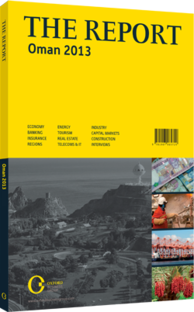Another addition: Duqm’s deepwater port will play a key role in maritime strategy
Located on the coast, roughly halfway between Muscat and Salalah, the port of Duqm is the sultanate’s newest maritime trade facility. It could also become one of its most important centres for ship repair and shipbuilding, as well as for the Omani – and regional – oil industries, and ultimately take a key role in the sultanate’s maritime transport strategy. Astonishingly, it was only a dozen years ago that this stretch of coast was more famous for its long sandy beach and small fishing village than for its extensive dry docks and loading quays. Duqm has risen dramatically, with project managers confident that it will soon be one of the most important ports in the region.
Port Strategy
The sultanate’s development plans aim to create a series of niches for the country’s ports. Sultan Qaboos Port is to become a venue for cruise ships and naval vessels, Sohar an industrial and commercial hub. Salalah, meanwhile, is set to dominate the transhipment trade (see analysis). Duqm will thus cater to the oil business, both onshore and offshore. Indeed, Duqm largely began back in the 1950s as a settlement linked to local oil exploration and production initiatives. Many of Oman’s oil fields lie to the south-west of Duqm, including major deposits such as Mukhaizna and Marmul. These fields and many others have also been subject to advanced enhanced oil recovery technique to boost output, requiring an efficient local oil services infrastructure. Recently too, offshore finds have been made within 300 km of the deepwater port. To the north-west lie most of Oman’s onshore gas fields, with a feasibility study into a 230-km pipeline linking these to Duqm completed late 2012. Duqm is also located near to many of Oman’s mineral deposits. Large quantities of limestone, gypsum, silica sands and dolomites are located in this region, ensuring the potential for mining industries, as well as processing industries to create glass, cement and other materials once the gas link is completed. The port may also have the ability to leverage its position with respect to Saudi oil and gas fields in the Empty Quarter, which lies just over the border to the west. Indeed, Duqm could provide an alternative route to the Strait of Hormuz or the Red Sea to get oil and gas to market, with Duqm a blue-water port closer to Asian and Western routes than any existing Gulf port.
Establishment
In 2000 the government began the Port of Duqm project, with construction of the first phase beginning in 2007. The Port of Duqm Company was set up in 2010 to run the facility – a 50/50 joint venture between Antwerp Port Consortium and the Omani government – while one of its most important participants, the Oman Drydock Company (ODC), had its soft opening in 2011, servicing its 100th ship in late 2012. The first cargo handling operations also commenced in 2012, with the port officially opening in July – two years ahead of schedule – given pressing demand.
The ODC complex currently consists of two dry docks, of 410 metres by 95 and 80 metres wide, along with a 2800-metre quay and 453,000 sq metres of repair area, plus areas for workshops and yards. A floating dock is planned for completion in the next two to three years, with 100-120 ships per year expected to use the ODC facility, while a general repair and maintenance service is also in the initial stages of development.
Long-Term Vision
At the time of writing, the port was mainly handling project cargo – oversized or overweight items for specific projects, mainly in oil and gas or construction – along 2200 metres of quayside. This is just phase one, however, which includes a container terminal of 3.5m TEUs, a dry bulk terminal of 5m MT, and a multi-purpose terminal of 800,000 MT. Phase two will result in approximately 10 km of quay length and several liquid jetties, with these still to be tendered.
Plans for a 200m-barrel oil storage facility to take crude from neighbouring countries, as well as Oman, are progressing alongside the development of a major industrial zone (see industries chapter), with refining and processing its main sectors. This is in addition to current construction of a new town to house workers and integrating local transport with the rest of Oman.
You have reached the limit of premium articles you can view for free.
Choose from the options below to purchase print or digital editions of our Reports. You can also purchase a website subscription giving you unlimited access to all of our Reports online for 12 months.
If you have already purchased this Report or have a website subscription, please login to continue.

